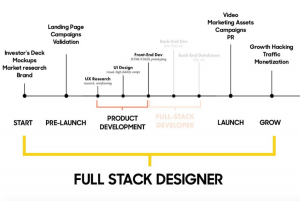For years, as an employee of a variety of organizations ranging from small consulting firms to the US Army, I’ve been increasingly fascinated with the way in which groups functioned. How some could quickly align around a common set of practices that added tremendous value, while others could not. How some organizations were able to coordinate and integrate efforts across the globe by setting clear values, expectations and processes in place where others seemed to be operating behind the curve every step of the way.
A decade later, having spent the majority of my professional career in the organizational culture space, I continue to be driven to understand how leaders and organizations are able to achieve significant and lasting performance that catapults them ahead of the competition (or not). Why do these leaders and organizations succeed while others just seem to lag or cease to exist altogether?
While there are a lot of variables that come into play in each situation, one common root always seems played a key role – the culture.
If culture is defined as “the way things get done around here,” the way of doing things that organizations develop through trial and error, over time, are the things that drive behavior and performance.
Organizations that are able to set very clear and aligned values and processes will consistently outperform those that cannot. Furthermore, leaders who understand when it’s time to do things differently in order to stay relevant are those that are best able to adapt their organizations to changes in the business environment.
While it sounds simple in theory, its much more difficult to pull off in reality- ask any business leader out there.
So, how can leaders make this happen? How do you intentionally create a sustainable culture of high performance in your organization?
How Your Company Can Achieve High Performance
Now that “culture” has been recognized as Merriam-Webster’s word of the year, the role of culture in a high performance organization seems to be coming of age in business. This new awareness has given me the opportunity to meet a variety of people who have shared their own ideas about how culture drives performance. One such person is Olli Laurén, who leads the Global Machinery and Engineering segment of Egon Zehnder’s Industrial Practice.
I had a chance to spend some time with Olli recently to talk about his recent research paper, “How Exceptional Companies Create a High Performance Culture.” Together, we discussed 3 core abilities that an organization must possess in order to reach high performance:
1. The ability to stop and take a hard look in the mirror. In today’s rapid-fire business environment, taking a minute to press pause and think can seem like a death-sentence. Unfortunately, organizations that operate in this fashion may continue to spin their wheels with the same old ways of doing things to try to solve problems that have changed or evolved over time.
Olli calls this quality “a passion for renewal.” Organizations that are able to stop from time-to-time to really understand why they are doing these things are better positioned to identify the need to change in order to keep pace with the market and continue to drive results.
2. The ability to include all stakeholders in the conversation. Culture is a collective concept- a phenomenon that forms and evolves through the norms of the group. While many people view culture as the responsibility of leadership alone, the most successful organizations I’ve observed and worked with over the years are those that understand and value the input of their stakeholders.
Olli recognizes the need for transparent and trusting relationships throughout an organization. By fostering trust and transparency at all levels, stakeholders are given a safe environment to provide input and take an active role in shaping the organization’s culture.
3. The ability to let go of the existing behaviors and practices that are no longer serving the organization’s success. Knowing you should lose ten pounds and actually changing your behavior to do it are two very different things. Getting people to understand that some ways of doing things are no longer effective and actually getting them to change is similar. In both cases, you must take the time to change behaviors that are no longer supporting your desired goals.
Humility is a key concept here, for leaders and employees alike. It takes a lot for people to be comfortable with giving up the way they’ve always done things. Some take it as a statement that what they’ve been doing all along was wrong. Others fear that they may not be able to succeed if asked to doing things differently. Still others hear that there is a need to change but their leaders don’t role model the new expectations, which makes it easy to stay in the same old habits.
Can You Create a High Performance Culture?
The challenge that leaders face in creating high performance cultures is overcoming the deeply rooted assumptions and behaviors that aren’t doing their organization any favors.
Does that mean it’s impossible? Absolutely not.
If my experience has taught me anything, it’s that any organization, no matter what size or industry, has the ability to build and sustain a culture of high performance. To make that happen, you, as a leader, must be willing to take a hard look in the mirror with your colleagues, dig deep into what needs to change, and help your entire organization let go of the behaviors that are no longer serving its goals.
It’s simply a stepping stone on the path to your organization’s long-term success.
(220)
Report Post





